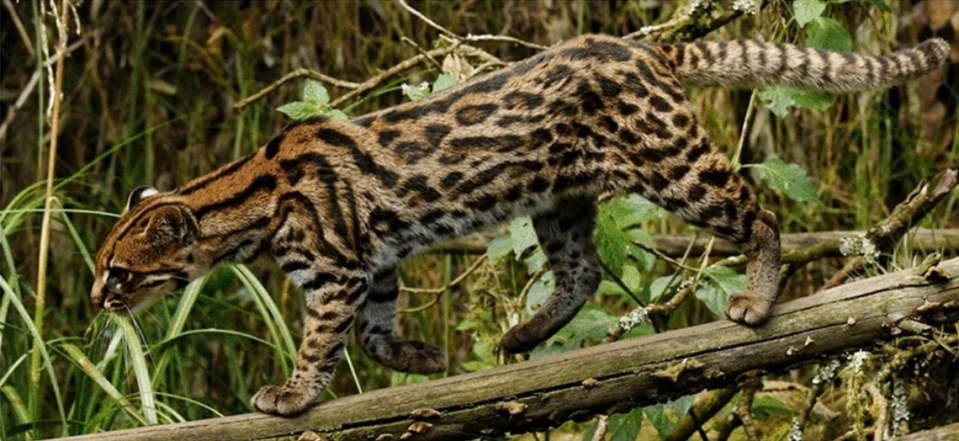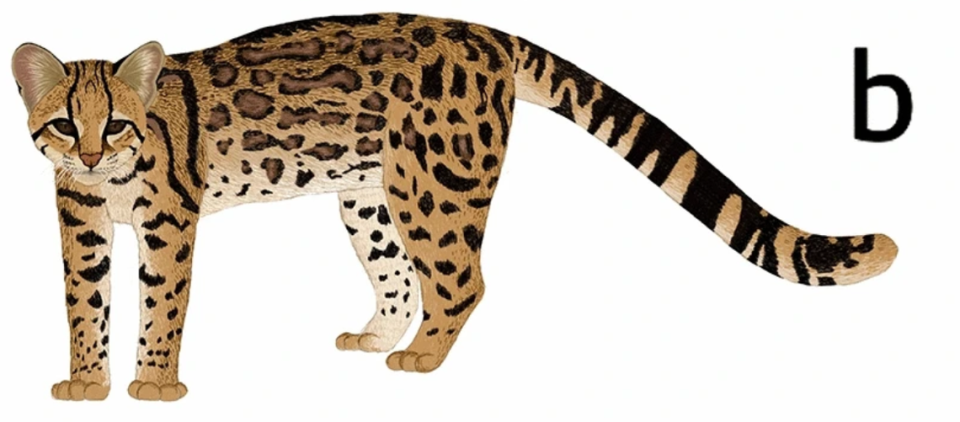‘Cryptic’ creature lurking in cloud forests of Colombia is an ‘enigmatic’ new species
For years, an “elusive” feline creature lurked in the tropical forests of South America, devouring small animals and dodging human detection — until now.
The predator, distinguished by its long tail and spotted fur, was recently discovered by researchers using remote trapping cameras, according to a study published on Jan. 29 in the journal Scientific Reports.
It belongs to a group of felines known as tiger-cats, which are among the “most intriguing, enigmatic, and fascinating group of felids,” said researchers affiliated with Brazil’s State University of Maranhão.

Previously, only two species of the leopard-like animals were known to exist, occupying biodiversity hotspots throughout South America, including in the Andes mountains and the Atlantic Forest of eastern Brazil.
Their populations are considered threatened, a fact that led researchers to comprehensively study the cats — which resulted in the discovery of the new species.
Newfound species
By poring over trail camera footage, roadkill and museum specimens, researchers were able to identify the “cryptic” new species, which they named pardinoides.
At first glance, it does not appear all that different from the other two tiger-cat species — guttulus and tigrinus — but there are a number of subtle distinctions.
Pardinoides measures about 19 inches long, making it about the size of a house cat, researchers said.

Its nearly foot-long tail is “significantly larger” than guttulus’ and slightly longer than tigrinus’, researchers said. The cat’s ears are also proportionally smaller than those of tigrinus.
The newfound cat’s teeth suggests it preys on the same animals as guttulus and tigrinus, including small rodents, birds, lizards and marsupials, researchers said. All three species are also predominantly nocturnal — though they display some daytime activity.
According to researchers’ genetic models, pardinoides is suited to live in the cloud forests of the Darién gap, the thin strip of land connecting North and South America.
“It could be possible that the clouded tiger-cat could be found in this rugged and unexplored area,” in addition to the Andes, researchers said.
Importantly, all three tiger-cat species appear to have experienced a drastic reduction in range nearly equivalent to the size of India, putting them at risk of extinction.
“All these factors lead to a dire need for real conservation policy action, notably — but not, by any means, exclusively — for Brazil and Colombia,” where the majority of known tiger-cats dwell, researchers said.
‘Large’ metallic creature — thought extinct for 100 years — rediscovered on island
Nocturnal creature with bushy tail caught in a trap in Madagascar. It’s a new species
Mysterious ruins found hidden in courtyard of 500-year-old castle in Norway. See them

